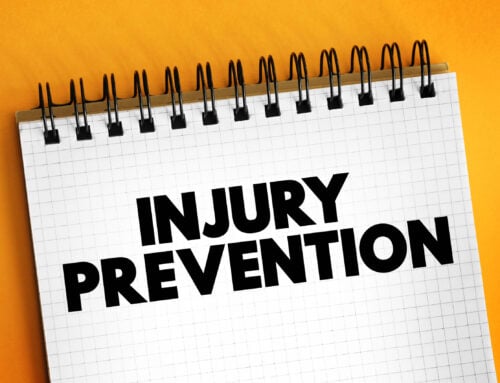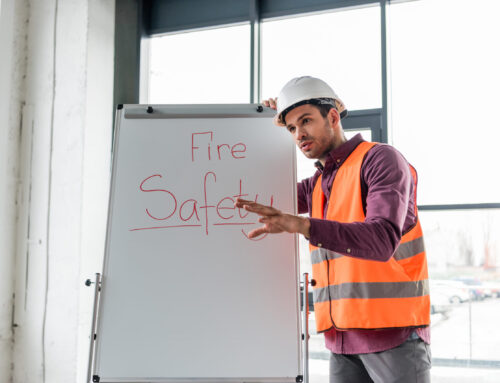Most companies are in business to make money.
Of course, safety and profitability are perfectly compatible. But because it doesn’t generate revenue, safety tends to be seen as a cost-center absorbing resources that could be more profitably invested in initiatives more closely tied to revenue generation.
Your success as a safety coordinator might very well turn on how well you dispel that notion. The good news is that research shows that CEOs and corporate decision makers are coming to appreciate that safety programs do — or at least have the potential to — generate positive return on investment (ROI). The bad news — if you can call it bad news — is that safety coordinators are still expected to demonstrate the ROI of their particular initiatives.
Here’s how to do that.
What Is ROI?
ROI is a financial metric that business people use to figure out if spending money on a project makes financial sense. In addition to making go/no go decisions, ROI is one of the most popular methods for comparing one investment option to another, e.g., buying new machines vs. retrofitting old ones.
Positive ROI basically means that the benefits yielded by the investment are greater than the amount of the original investment. A negative ROI means the opposite.
Although there are lots of different variations, the basic, or “simple” ROI equation is this:
ROI = Net Benefits/Costs x 100 %
Generally speaking, the higher the ROI, the more desirable the investment.
The Elements of ROI
Here’s a closer look at the different parts of the ROI equation:
Net Benefits: This is the difference between the benefits of the investment and the costs associated with the benefits. So, for example, if spending $100,000 on a new lockout system is expected to generate $150,000 per year in reduced claims, the net benefit would be $50,000 (that is, $150,000 – $100,000). As a technical matter, you can calculate net benefits either before or after taxes and depreciation.
Costs: The denominator in the ROI equation is the total costs needed to generate the benefits from the investment.
Time Period: There’s also a timing element in the ROI equation. Companies generally want to measure recovery of the investment over a unit of time. In some cases, benefits are shown during the first year of investment — or even within the same fiscal year. In other words, companies want to know if they can recover the costs of the investment in the first year (or fiscal year). Other companies use an ROI formula that spreads out the benefits on a weighted average over the lifetime of the investment.
ROI & Workplace Safety — Proposal Building
Although the basic ROI equation is pretty straightforward, there are some subtle variations in application. So you need to talk to your company’s financial officials to make sure you know which formula your company uses:
- Are net benefits calculated before or after taxes?
- Are net benefits calculated before or after depreciation?
- What ROI levels does the company expect to approve investments outside safety?
- If the ROI on your proposed investment isn’t competitive with other proposals within the company, it obviously won’t stand much chance of being adopted.
- How immediate must ROI be? Does your company insist on recouping all costs within the fiscal year? Within one full year? Over the life of the project? The more immediately you can show a positive ROI, the better your chances of winning financial support for the proposal.
Measuring Safety ROI: Trailing Indicators
Because it looks to future performance, ROI works best with measures that are predictive, rather than reactive in nature. Or, to use the business lingo, measuring success under ROI entails the use of leading rather than trailing indicators.
This puts safety coordinators at a disadvantage. “Historically,” explains OHS consultant Wayne Pardy, “safety professionals have relied on measures such as lost time injuries, frequency and severity, accident costs, etc. to evaluate safety performance.” These measures look at past performance. At first blush, they also appear to provide a reliable indicator of future performance. After all, if injury rates have been low in the past, it’s a sign that the safety program is effective and will continue to work well in the future.
But this isn’t necessarily true. The problem with after-the-fact accident and injury statistics is that an accident has to first occur in order to have any reliable indicator of performance, notes Pardy. “This is nothing more than bean counting. It tells you nothing about system improvement opportunities or prevention strategies.”
Although they are important, accident and injury indicators (including frequency and severity rates) are measures of failure, Pardy continues. They focus on the negative. They can be used for comparison purposes, but that comparison is still based on failures recorded by your safety system, as compared with your performance, and that of others. And you need to wait until you have a statistically reliable number of these indicators tracked over a reliable time frame to give you an accurate picture of your performance. This methodology is ill-suited to the demands of ROI analysis.
Forward Looking ROI: The Procter & Gamble Example
The consumer products giant Procter & Gamble (P&G) is an example of how to use leading indicators to measure the success of a safety program. P&G identified 9 “key elements,” or indicators of success in the safety realm, including safe practices and effective training sessions and asked each P&G facility administrators to rate the facility’s effectiveness in each element on a scale of 0 to 20. After 4 years, all scores were added up and compared to the facility’s injury rates.
Result: P&G identified that a score of 8 or better was a strong indicator of low injury rates. Consequently, all facilities falling below an 8 had to develop an action plan and a time frame for reaching a minimum score of 8.
Conclusion
To measure success under ROI, you must turn your safety performance measurement and recognition system into an achievement-based system, rather than one based on injuries and other failures. Safety professionals must develop measures to assess and reward positive behaviors, not just of workers but everybody in the organization, including management.






